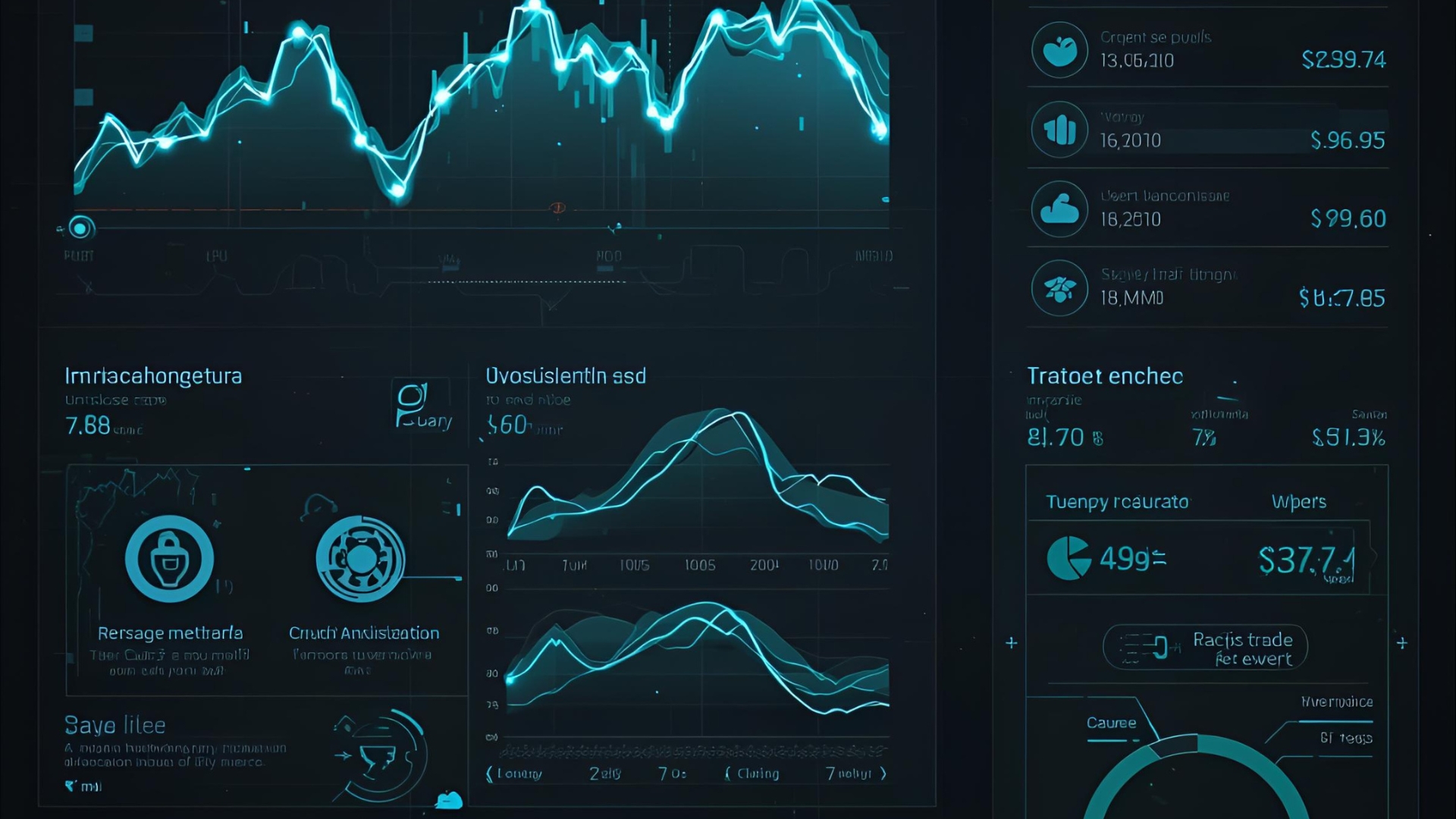
How to Trade Bitcoin Expert Guide for Beginners
Bitcoin continues to dominate the cryptocurrency world, drawing both novice investors and seasoned traders into its volatile yet opportunity-rich markets. But knowing how to trade bitcoin profitably is a challenge: price swings, technical charts, exchange mechanics, and emotional control all play critical roles. In this comprehensive guide, we’ll walk you through every step of learning how to trade Bitcoin, from setting up your first account to developing strategies, managing risk, and scaling your trading journey. You’ll gain not just theoretical understanding, but also practical insights so that you can approach BTC trading with confidence and discipline.
Throughout this article, we’ll weave in related phrases like “bitcoin trading strategies,” “crypto exchange selection,” “risk management in crypto,” and more—naturally and usefully—to help this guide serve both readers and search engines. Let’s dive in.
What Is Bitcoin Trading and Why Do People Trade BTC
Before diving into tactics, it’s essential to what it means to trade bitcoin (as opposed to simply investing or holding long term).
When you trade bitcoin, you buy and sell BTC to profit from price movements, often over short-to-medium periods. In contrast, investing or HODLing involves acquiring bitcoin and holding it for months or years, betting on overall appreciation. Trading requires more active engagement, market analysis, and risk control.
Many people are drawn to bitcoin trading because of its high volatility (which can translate to large profits or losses), its 24/7 market hours, and relatively low barrier to entry. However, this same volatility means that without discipline, it’s easy to suffer losses. Thus, trading bitcoin successfully demands knowledge, planning, and consistent execution.
Getting Started — Set the Foundation
Choose a Reliable Crypto Exchange
One of the first—and most crucial—steps when learning how to trade bitcoin is choosing the right crypto exchange. The exchange you select will determine your fees, security, liquidity, trading features, regulatory compliance, and user interface.
Look for reputable exchanges, have strong security measures (such as two-factor authentication, cold storage, withdrawal whitelists), transparent fee structures, good liquidity, and ease of use. Some of the top exchanges include Binance, Coinbase, Kraken, and Bitstamp. These platforms allow you to trade bitcoin pairs with fiat or stablecoins, and often offer advanced tools like margin trading and derivatives.
When you evaluate exchanges, compare:
-
Trading fees and spreads
-
Withdrawal and deposit fees
-
Security protocols and insurance
-
Supported fiat or crypto pairs
-
User interface and tools (charts, order types, indicators)
-
Regulation and KYC policies
A well-chosen exchange gives you a smoother, safer environment to learn and trade BTC.
Create and Verify Your Account (KYC & Security)
Once you’ve picked an exchange, you’ll need to register and complete KYC (Know Your Customer) procedures. That typically involves submitting identification (passport, ID card, driver’s license) and proof of address, such as a utility bill or bank statement. These steps are standard in most regulated platforms.
Security is paramount from day one. Use a unique, strong password. Enable two-factor authentication (2FA) using an authenticator app (rather than SMS when possible). If the exchange allows whitelisting withdrawal addresses or setting withdrawal limits, do so. The safety of your funds and trading capability depends greatly on how well you protect access to your account.
Deposit Funds — Fiat or Crypto Funding
To start trading, you must deposit funds into your trading account. Exchanges typically support:
-
Fiat deposit — using bank transfers, credit/debit cards, or local payment methods.
-
Crypto deposit — transferring BTC or stablecoins from another wallet or exchange.
Choose the method that minimizes fees and processing time. Some fiat deposits might take days or attract high transaction charges; transferring crypto may incur network (miner) fees. Once the funds arrive, you’re ready to start trading BTC.
Basic Trade Mechanics

Spot Trading vs. Derivatives (Futures, Margin)
In spot trading, you buy or sell actual bitcoin and hold the asset in your wallet or on the exchange. Spot trading is generally simpler and more suited for beginners, since you are dealing with real BTC, and there is no leverage or contract expiry.
On the other hand, derivatives trading (futures, perpetual contracts, margin) allows you to speculate on Bitcoin’s price movement without owning the underlying asset. You can go long (betting the price rises) or short (betting the price falls). Leverage can amplify profits—but also significantly increases risk.
As a new trader, starting with spot trading is safer and provides more learning room. Once you become comfortable and disciplined, you may gradually explore derivatives with strict risk controls.
Trading Pairs and Quotes (BTC/USD, BTC/USDT, etc.)
Bitcoin is traded against other currencies or cryptos—called trading pairs. Common pairs include BTC/USD, BTC/USDT (Bitcoin vs Tether), BTC/EUR, and altcoin pairs like BTC/ETH. When you see a quote like “BTC/USD = 50,000,” that means one Bitcoin costs 50,000 USD.
Understanding pairs is important when analyzing price movements, selecting trades, and managing your risk, because each pair has a base currency (BTC) and a quote currency (USD, USDT, etc.).
Order Types (Market, Limit, Stop-Loss, Take-Profit)
Order types determine how and when your trades execute:
-
Market order: Immediately buys or sells at the best available market price.
-
Limit order: Sets a specific price at which you want to buy or sell; only executed if the market reaches that price.
-
Stop-loss order: Automatically sells your position if it falls to a specified price, limiting loss.
-
Take-profit order: Automatically closes your position when it reaches a target price to lock in profits.
These tools are essential to managing your trades effectively and reducing emotional decision-making. You’ll use them constantly as you learn how to trade Bitcoin.
Fundamental and Technical Analysis in BTC Trading
Fundamental Analysis — News, Market Sentiment & On-Chain Data
Fundamental analysis involves examining the broader factors influencing Bitcoin’s price, such as regulatory developments, adoption news, macroeconomic trends, and on-chain metrics.
For instance, announcements like ETF approvals, institutional adoption, or government regulation shifts can trigger large price moves. On-chain data—like exchange inflows/outflows, wallet activity, miner behavior—offer unique insight into supply-demand dynamics that traditional markets don’t provide.
Using both news and blockchain data helps you avoid chasing hype or making impulsive trades. Always ask: “Does the news align with on-chain signals or price action?”
Technical Analysis — Charts, Indicators & Patterns
Technical analysis (TA) is the backbone of short-term trading. It involves studying price charts and applying indicators and patterns to forecast price direction.
Key tools include:
-
Trendlines and support/resistance zones
-
Moving averages (SMA, EMA)
-
Relative Strength Index (RSI), MACD, Bollinger Bands
-
Candlestick patterns (Doji, engulfing, etc.)
By combining multiple indicators and validating them across timeframes, you can build confidence in when to enter or exit trades. For example, you might look for a bounce at a support zone confirmed by RSI oversold before entering a long. Over time, you’ll develop a strategy that blends several signals.
Developing Your Bitcoin Trading Strategy

Day Trading, Swing Trading, Scalping, Position Trading
Different traders operate on different timeframes:
-
Day trading: Enter and exit trades within a single trading day.
-
Swing trading: Hold positions for several days to weeks, capturing intermediate trends.
-
Scalping: Execute many very short-term trades, aiming for small profits repeatedly.
-
Position trading: Longer-term trades held for weeks or months, often combining fundamental and technical analysis.
Each style requires a different mindset, tools, and risk tolerance. Beginners often start with swing or position trading, as they have more time to evaluate and don’t demand constant screen watching.
Risk Management — The Key to Survival
Risk management is arguably the most crucial component of learning how to trade Bitcoin. Without proper controls, losses can wipe out your capital faster than profits can accumulate.
Core rules include:
-
Never risk more than 1–3% of your capital on a single trade
-
Use stop-losses to automatically exit if things go against you
-
Use position sizing based on volatility, not just gut feel
-
Diversify and don’t over-leverage
-
Avoid emotional trading by sticking to your plan
Entry & Exit Criteria — How to Time Trades
Successful traders define rules for when they enter a trade and when they exit (either for profit or loss). Some examples include:
-
Enter when the price breaks above resistance with high volume
-
Exit if the price falls below a key moving average
-
Use trailing stop-loss to let winners run, but protect gains
-
Exit partial positions at multiple profit targets
Having clear criteria prevents emotional or impulsive trades. Every trade should have a rationale, a risk-reward ratio (for example, aiming for 2× your risk), and an exit plan before you even open it.
Tools, Platforms & Automation
Charting Tools and Trading Platforms
To trade bitcoin well, you’ll rely heavily on charting platforms (e.g., TradingView, Coinigy) that allow you to overlay indicators, draw trendlines, and monitor multiple assets. Many exchanges embed charting, but standalone tools provide flexibility.
Choose platforms that allow multiple timeframes, customization, alerts, and integrations with your exchange. This helps you react quickly to setups and monitor markets holistically.
Bots, Copy Trading & Algorithmic Strategies
As you gain experience, some traders incorporate automation via trading bots or copy-trading services. Bots can follow predefined strategies 24/7—useful in a 24/7 market. Copy trading allows you to mirror trades of experienced traders (though this can be risky if you don’t understand their logic).
If you use bots or algorithmic strategies, always backtest thoroughly and run them with small capital. Automation is a force multiplier—but without discipline and monitoring, mistakes can compound quickly.
Common Mistakes and How to Avoid Them
Even experienced traders make errors. When learning how to trade Bitcoin, be aware of pitfalls such as:
-
Overconfidence and trading without a plan
-
Chasing trades after missing signals
-
Ignoring risk management or using excessive leverage
-
Letting emotions drive decisions (“fear of missing out” or panic selling)
-
Not securing your funds (lax security measures)
-
Overtrading—too many small trades, eating fees
Always review your trade history, jot down lessons, and continuously refine your approach.
Scaling Up — Growing Your Trading Skills
With small profits and consistent discipline, you can gradually allocate more capital to your trading portfolio. As you scale:
-
Incorporate more advanced setups (e.g, harmonic patterns, Fibonacci)
-
Explore derivatives carefully, always using lower leverage
-
Use multiple strategies (swing, momentum, breakout)
-
Keep learning—new news, market trends, and technologies (e.,g. FTMs, new exchanges)
-
Maintain in capital reserve and never risk your core funds
Scaling isn’t just about more money—it’s about evolving your skills, robustness, and emotional discipline.
Also Read: Bitcoin Trading Regulations in Europe Complete 2025 Guide for Crypto Traders
Conclusion
Learning how to trade Bitcoin is a journey of continuous learning, discipline, and adaptation. This guide laid out the essentials: choosing exchanges, setting up an account securely, understanding trade mechanics, mastering fundamental and technical analysis, developing strategies, risk management, leveraging tools, and avoiding mistakes.
Remember, profitable trading doesn’t come overnight. Start small, trade methodically, learn from mistakes, and steadily evolve your approach. If you remain patient, informed, and disciplined, Bitcoin trading can become a valuable tool in your financial toolkit.
FAQs
Q: What is the best strategy for beginners to trade Bitcoin?
For beginners, starting with swing or position trading is often safer. These allow time to analyze trends and reduce “noise” from intraday fluctuations. Combine simple technical setups and conservative risk management before venturing into day trading or leverage.
Q: How much money do I need to start trading Bitcoin?
You don’t need a large sum. Many exchanges let you begin with as little as $10 to $100. What matters is that you risk only what you can afford to lose and use disciplined position sizing.
Q: Should I trade Bitcoin with leverage or avoid it?
Leverage magnifies both gains and losses. As a beginner, it’s wise to avoid or use very low leverage until you fully understand margin, drawdown, and risk protocols. Most advice emphasizes mastering spot trading first.
Q: How do I manage risk when trading BTC?
Use stop-loss orders, cap risk per trade (1–3% of your capital), diversify across strategies, avoid overleveraging, and always plan exits before entering a trade. Emotional discipline is key.
Q: Can I trade Bitcoin on mobile apps?
Yes—many exchanges offer mobile apps with full trading functionality. But always be careful—execute conservative trades, use good security features (2FA, app locks), and avoid rash decisions from a small screen.







